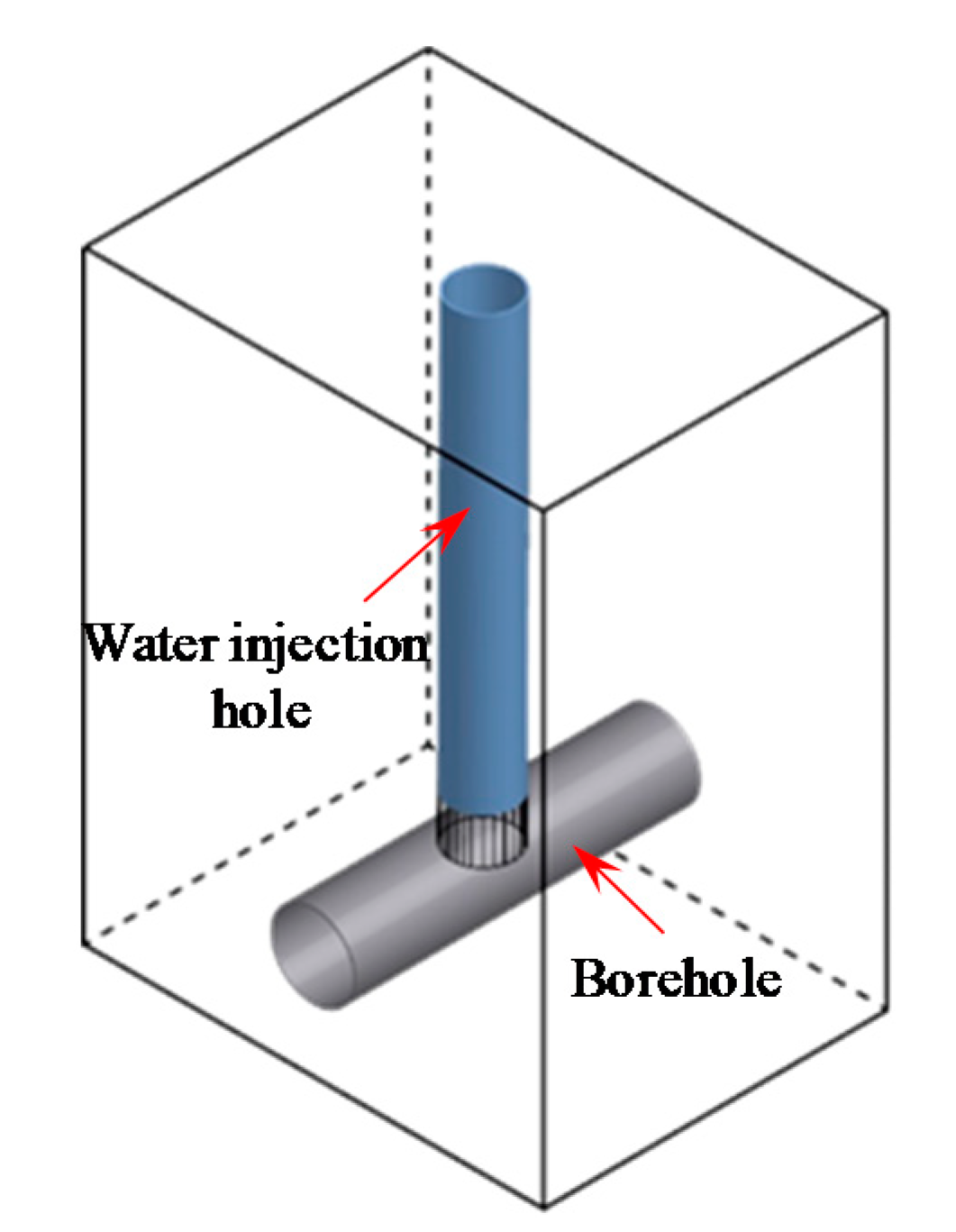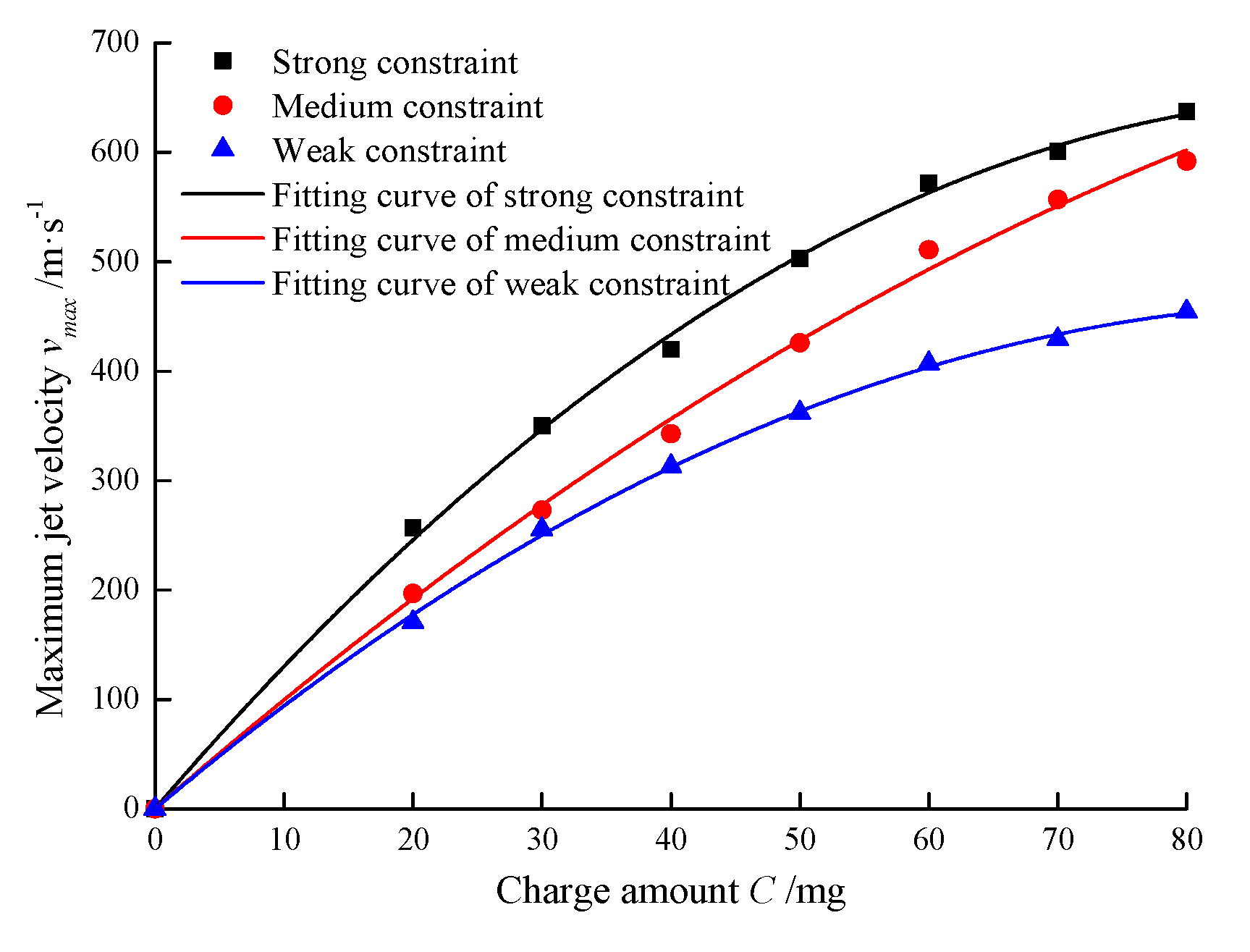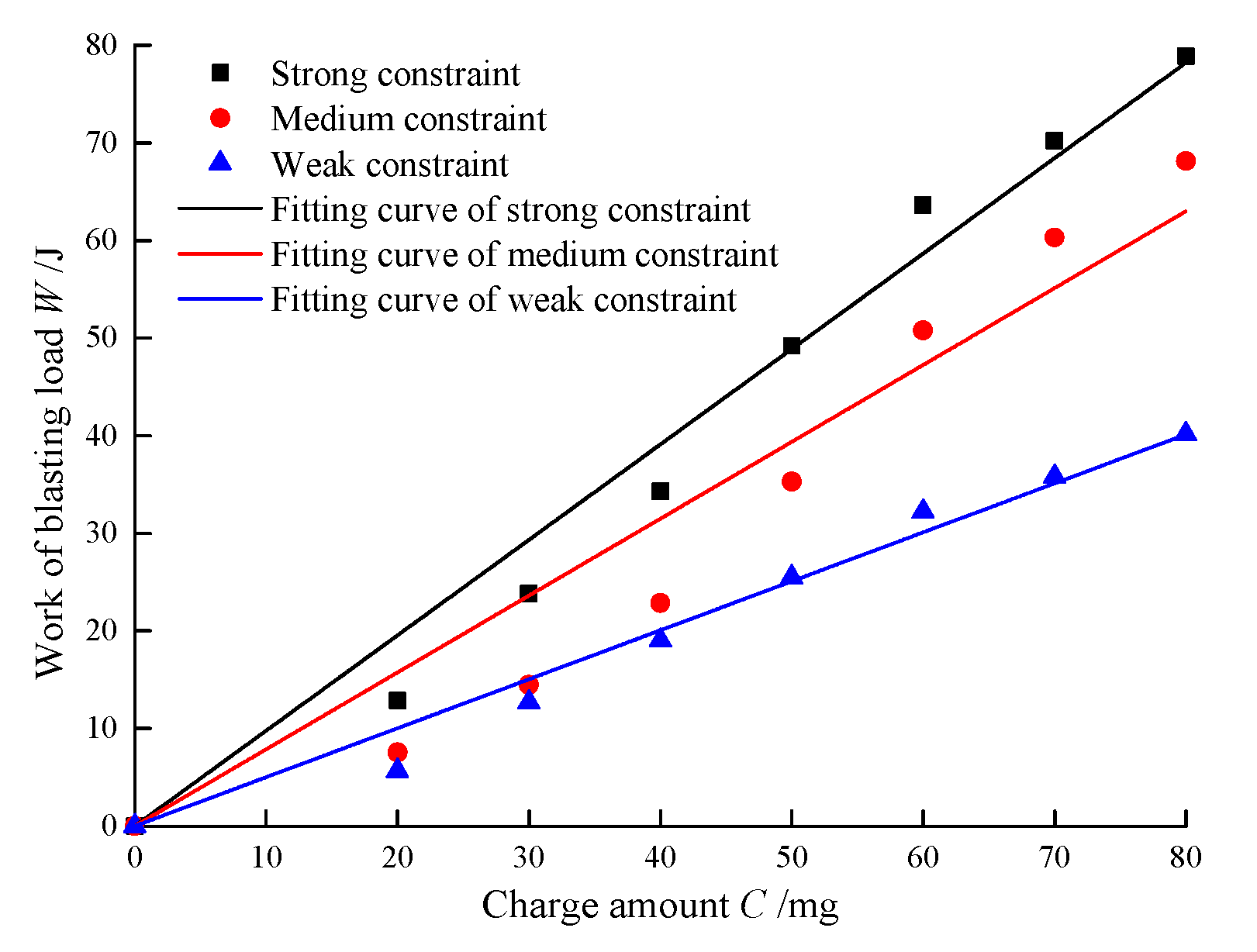Experimental Study on Blasting Energy Distribution and Utilization Efficiency Using Water Jet Test
Abstract
:1. Introduction
2. Experimental Design
3. Experiment Analysis
3.1. Phenomenon Analysis
3.2. Data Analysis
4. Conclusions
Author Contributions
Funding
Conflicts of Interest
References
- Yang, R.; Ding, C.; Yang, L.; Lei, Z.; Zhang, Z.; Wang, Y. Visualizing the blast-induced stress wave and blasting gas action effects using digital image correlation. Int. J. Rock Mech. Min. Sci. 2018, 112, 47–54. [Google Scholar] [CrossRef]
- Li, M.; Zhu, Z.M.; Liu, R.F.; Liu, B.; Zhou, L.; Dong, Y.Q. Study of the effect of empty holes on propagating cracks under blasting loads. Int. J. Rock Mech. Min. Sci. 2018, 103, 186–194. [Google Scholar] [CrossRef]
- Silva, J.D.; Amaya, J.G.; Basso, F. Development of a predictive model of fragmentation using drilling and blasting data in open pit mining. J. S. Afr. Inst. Min. Metall. 2017, 117, 1089–1094. [Google Scholar] [CrossRef] [Green Version]
- Zhang, Z. Kinetic energy and its applications in mining engineering. Int. J. Min. Sci. Technol. 2017, 27, 237–244. [Google Scholar] [CrossRef]
- Persson, P.; Lundborg, N.; Johansson, C. The basic mechanisms in rock blasting. In Proceedings of the International Society of Rock Mechanics Proceedings, Lisbon, Portugal, 22 September 1970. [Google Scholar]
- Cho, S.H.; Kaneko, K. Influence of the applied pressure waveform on the dynamic fracture processes in rock. Int. J. Rock Mech. Min. Sci. 2004, 41, 771–784. [Google Scholar] [CrossRef]
- Aliabadian, Z.; Sharafisafa, M.; Mortazavi, A.; Maarefvand, P. Wave and fracture propagation in continuum and faulted rock masses: Distinct element modeling. Arab. J. Geosci. 2014, 7, 5021–5035. [Google Scholar] [CrossRef]
- Wang, J.; Cheng, Y. Simulating test on the working process of explosion gases. Blasting 1998, 2, 5–9. (In Chinese) [Google Scholar]
- Banadaki, M.M.D.; Mohanty, B. Numerical simulation of stress wave induced fractures in rock. Int. J. Impact Eng. 2012, 40, 16–25. [Google Scholar] [CrossRef]
- Yang, R.; Ding, C.; Wang, Y.; Chen, C. Action effect study on medium under loading of explosion stress wave and explosion gas. Chin. J. Rock Mech. Eng. 2016, 35, 3501–3506. (In Chinese) [Google Scholar]
- Cho, S.H.; Kaneko, K. Rock fragmentation control in blasting. Mater. Trans. 2004, 45, 1722–1730. [Google Scholar] [CrossRef] [Green Version]
- Kutter, H.K.; Fairhurst, C. On the fracture process in blasting. Int. J. Rock Mech. Min. Sci. 1971, 8, 181–202. [Google Scholar] [CrossRef]
- Yang, X.; Wang, M. Mechanism of rock crack growth under detonation gas loading. Explos. Shock Waves 2001, 21, 111–116. (In Chinese) [Google Scholar]
- Trivino, L.F.; Mohanty, B. Assessment of crack initiation and propagation in rock from explosion-induced stress waves and gas expansion by cross-hole seismometry and FEM-DEM method. Int. J. Rock Mech. Min. Sci. 2015, 77, 287–299. [Google Scholar] [CrossRef]
- Mchugh, S. Crack extension caused by internal gas pressure compared with extension caused by tensile stress. Int. J. Fract. 1983, 21, 163–176. [Google Scholar] [CrossRef]
- Brinkmann, J.R. An experimental study of the effects of shock and gas penetration in blasting. In Proceedings of the Third International Symposium on Rock Fragmentation by Blasting—Fragblast 3, Brisbane, Australia, 15 January 1990. [Google Scholar]
- Yan, S. Measurement of the explosion energy of the centralized charge and the linear charge underwater. Explos. Mater. 2003, 32, 23–27. (In Chinese) [Google Scholar]







| Charge Amount C/mg | 0 | 20 | 30 | 40 | 50 | 60 | 70 | 80 | |
|---|---|---|---|---|---|---|---|---|---|
| Strong constraint | vmax/(m·s−1) | 0 | 257 | 350 | 420 | 503 | 572 | 601 | 637 |
| W/J | 0 | 12.84 | 23.81 | 34.29 | 49.18 | 63.60 | 70.22 | 78.88 | |
| Medium constraint | vmax/(m·s−1) | 0 | 197 | 273 | 343 | 426 | 511 | 557 | 592 |
| W/J | 0 | 7.54 | 14.49 | 22.87 | 35.28 | 50.76 | 60.31 | 68.13 | |
| Weak constraint | vmax/(m·s−1) | 0 | 171 | 255 | 313 | 362 | 407 | 429 | 454 |
| W/J | 0 | 5.66 | 12.67 | 19.04 | 25.49 | 32.22 | 35.80 | 40.16 | |
Publisher’s Note: MDPI stays neutral with regard to jurisdictional claims in published maps and institutional affiliations. |
© 2020 by the authors. Licensee MDPI, Basel, Switzerland. This article is an open access article distributed under the terms and conditions of the Creative Commons Attribution (CC BY) license (http://creativecommons.org/licenses/by/4.0/).
Share and Cite
Ding, C.; Yang, R.; Lei, Z.; Chen, C.; Zheng, C. Experimental Study on Blasting Energy Distribution and Utilization Efficiency Using Water Jet Test. Energies 2020, 13, 5340. https://doi.org/10.3390/en13205340
Ding C, Yang R, Lei Z, Chen C, Zheng C. Experimental Study on Blasting Energy Distribution and Utilization Efficiency Using Water Jet Test. Energies. 2020; 13(20):5340. https://doi.org/10.3390/en13205340
Chicago/Turabian StyleDing, Chenxi, Renshu Yang, Zhen Lei, Cheng Chen, and Changda Zheng. 2020. "Experimental Study on Blasting Energy Distribution and Utilization Efficiency Using Water Jet Test" Energies 13, no. 20: 5340. https://doi.org/10.3390/en13205340




